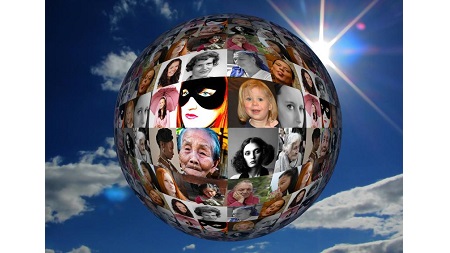
English | MP4 | AVC 1280×720 | AAC 44KHz 2ch | 2h 47m | 481 MB
Apply facial recognition using OpenCV in this course within the Data Science and Machine Learning Series. Follow along with machine learning expert Advait Jayant through a combination of lecture and hands-on to practice facial recognition software, including one project where you will build your own Snapchat Filter!
The following eight topics will be covered in this Data Science and Machine Learning course:
- Introducing Computer Vision and OpenCV. Be able to explain how computer vision works in this first topic in the Data Science and Machine Learning Series. Computer vision is the way of teaching intelligence to machines and teaching machines to view the world just as humans do. Examples are provided such as self-driving cars. Learn about OpenCV (Open Source Computer Vision Library). This library contains over 2,500 optimized computer vision and machine learning algorithms. Learn that digital images are stored in a matrix, and that grayscale images are single channel and colored images have three channels.
- Installing OpenCV and Working with Images. Install OpenCV and start working with images in this second topic in the Data Science and Machine Learning Series.
- Reading a Video Stream from the Webcam using OpenCV. Read a video stream from the webcam frame by frame using OpenCV in this third topic in the Data Science and Machine Learning Series.
- Performing Face Detection using OpenCV and the Haar Cascade Classifier. Perform face detection using OpenCV and the Haar Cascade Classifier in this fourth topic in the Data Science and Machine Learning Series.
- Generating the Face Recognition Training Dataset. Generate the face recognition training dataset in this fifth topic in the Data Science and Machine Learning Series. Follow along with Advait and extract images from the Webcam and detect faces and draw bounding boxes around each face.
- Applying the K-Nearest Neighbors Algorithm on the Iris Flower Dataset. Apply the K-Nearest Neighbors supervised learning algorithm on the Iris flower dataset for face recognition in this sixth topic in the Data Science and Machine Learning Series.
- Performing Face Recognition. Perform face recognition in this seventh topic in the Data Science and Machine Learning Series. Follow along with Advait and create a face recognition algorithm and test it by identifying images in a video stream. Then we will use the algorithm to match a face with an identifier.
- Creating a Pig Nose Snapchat Filter using OpenCV. Create a pig nose Snapchat filter using OpenCV in this eighth topic in the Data Science and Machine Learning Series. Follow along with Advait and apply all of the techniques from the prior sessions to build an advance face detection and recognition application. Also install and work with other libraries including dlib.
Table of Contents
1 Introducing Computer Vision and OpenCV
2 Installing OpenCV and Working with Images
3 Reading a Video Stream from the Webcam using OpenCV
4 Performing Face Detection using OpenCV and the Haar Cascade Classifier
5 Generating the Face Recognition Training Dataset
6 Applying the K-Nearest Neighbors Algorithm on the Iris Flower Dataset
7 Performing Face Recognition
8 Creating a Pig Nose Snapchat Filter using OpenCV
Resolve the captcha to access the links!